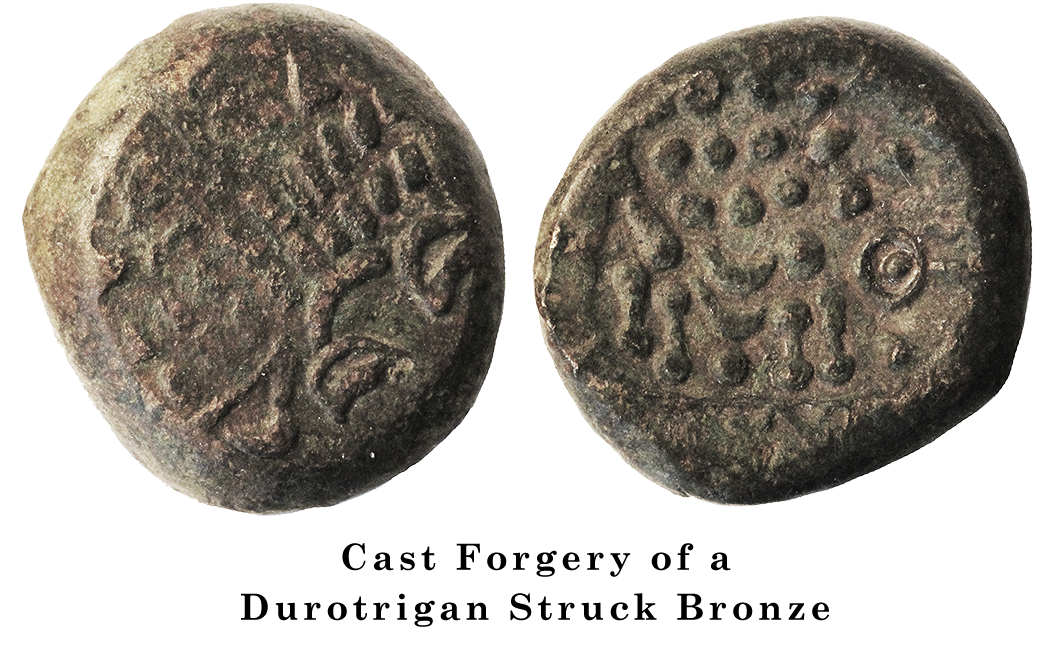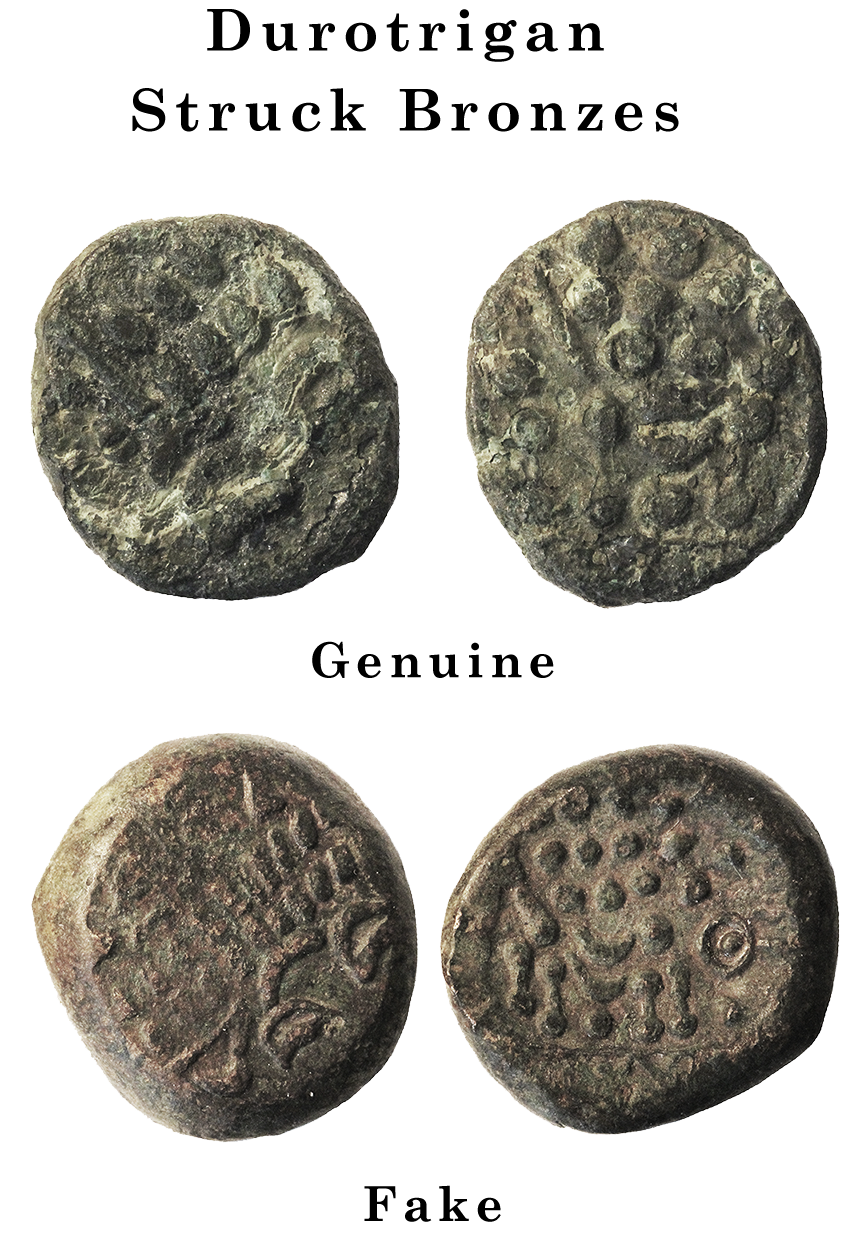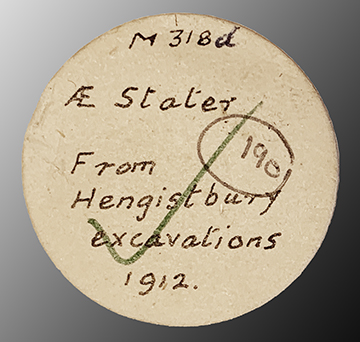
Numismatic Articles
Van Arsdell 2022a (Info)
Modern Celtic Fakes 13 – Durotrigan Struck Bronze
By Robert D. Van Arsdell
Introduction
The last article in this series mentioned a cast replica of a Durotrigan struck bronze stater. (Info) At the time, no example was available for illustration.
I have now obtained one from an internet seller. It appears to be another of those produced by a less-accomplished workshop in Bulgaria. I still hold the opinion that these are novelty items made for museum gift shops, or for use in jewelry or key chains. They are nothing like the genuine coins.
Description

It appears the replica studio has made cast copies of both cast and struck Durotrigan bronzes. The replicas of the cast bronzes were described in the previous article in this series. (See the article)
The replica of a struck bronze appears to be made on the same casting production line. Surprisingly, it's better than the genuine coin. Durotrigan struck bronzes were produced with fairly crude dies. The corrosion produced by two thousand years in the soil has further degraded the imagery.
The replica may have been produced using a good-quality silver stater as a model. The imagery is reasonably sharp and crisp, and approximates that seen on a silver stater (rather than a bronze).
In any event, the coin is nothing like any of the struck Durotrigan originals. The flan is too thick, and the remnants of a casting sprue give it away.
Metallographic analysis could be conducted to confirm that the replica is truly a casting. The current determination that it's a casting is based only on Stereomicroscope appraisal.
Summary
As in the previous article in this series, collectors and students of the series should be on guard for these items. They are being offered by internet sellers without proper identification as replicas.
One final caution is a reminder that in the 1970s and early 1980s, Haselemere forgeries became so common that even some of the most experienced workers became convinced they were genuine. The situation became so bad that genuine ancient coins came under suspicion because the didn't look like the fakes. (Info)

